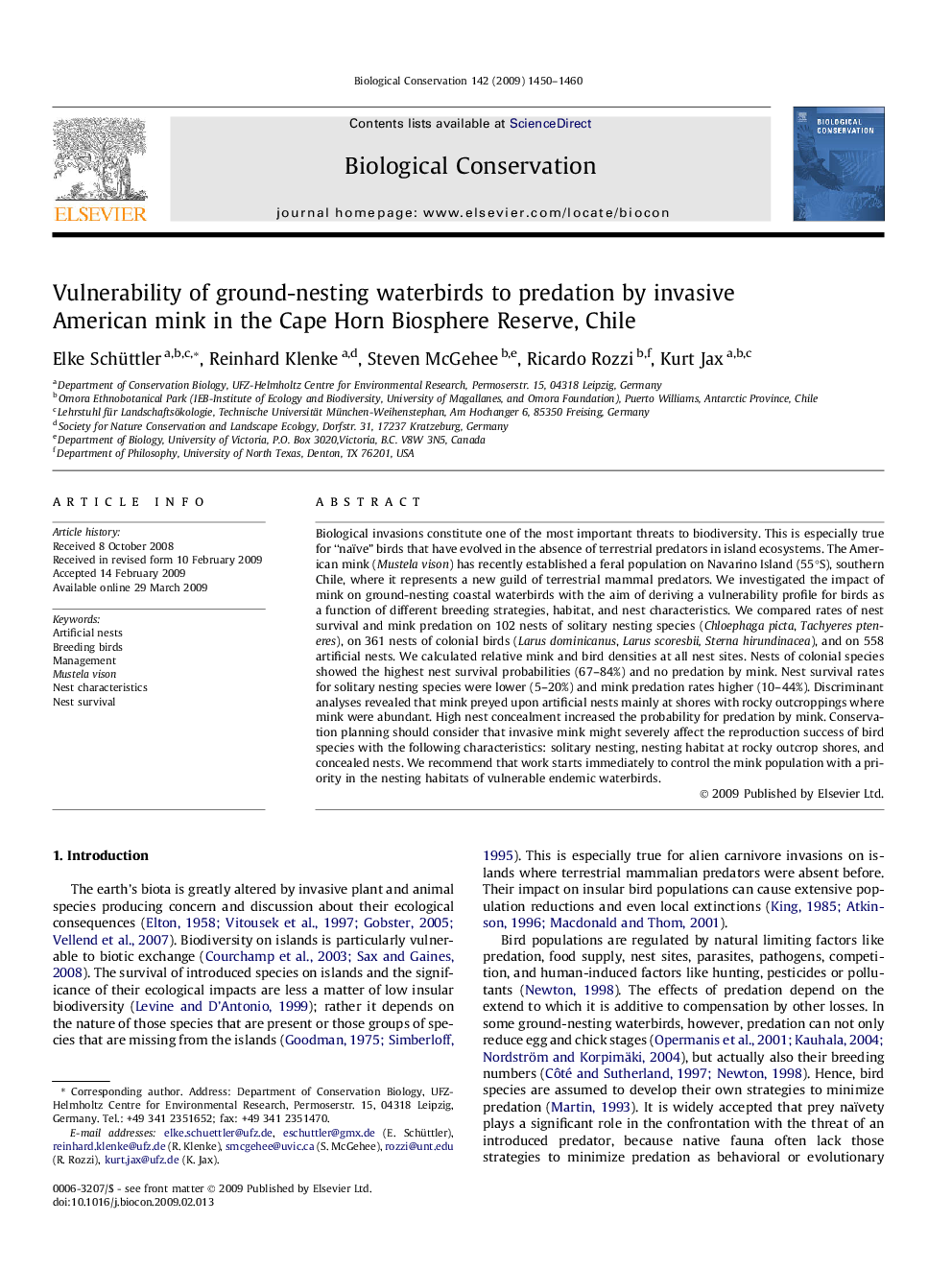| کد مقاله | کد نشریه | سال انتشار | مقاله انگلیسی | نسخه تمام متن |
|---|---|---|---|---|
| 4386478 | 1304567 | 2009 | 11 صفحه PDF | دانلود رایگان |

Biological invasions constitute one of the most important threats to biodiversity. This is especially true for “naïve” birds that have evolved in the absence of terrestrial predators in island ecosystems. The American mink (Mustela vison) has recently established a feral population on Navarino Island (55°S), southern Chile, where it represents a new guild of terrestrial mammal predators. We investigated the impact of mink on ground-nesting coastal waterbirds with the aim of deriving a vulnerability profile for birds as a function of different breeding strategies, habitat, and nest characteristics. We compared rates of nest survival and mink predation on 102 nests of solitary nesting species (Chloephaga picta, Tachyeres pteneres), on 361 nests of colonial birds (Larus dominicanus, Larus scoresbii, Sterna hirundinacea), and on 558 artificial nests. We calculated relative mink and bird densities at all nest sites. Nests of colonial species showed the highest nest survival probabilities (67–84%) and no predation by mink. Nest survival rates for solitary nesting species were lower (5–20%) and mink predation rates higher (10–44%). Discriminant analyses revealed that mink preyed upon artificial nests mainly at shores with rocky outcroppings where mink were abundant. High nest concealment increased the probability for predation by mink. Conservation planning should consider that invasive mink might severely affect the reproduction success of bird species with the following characteristics: solitary nesting, nesting habitat at rocky outcrop shores, and concealed nests. We recommend that work starts immediately to control the mink population with a priority in the nesting habitats of vulnerable endemic waterbirds.
Journal: Biological Conservation - Volume 142, Issue 7, July 2009, Pages 1450–1460